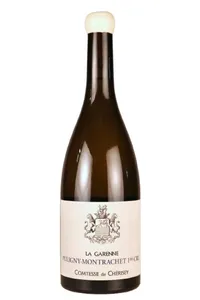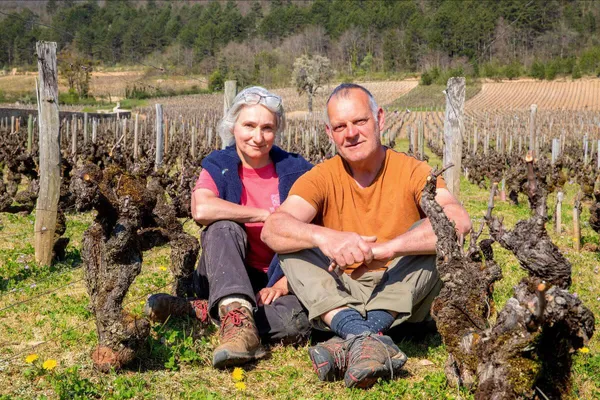The Comtesse de Chérisey estate cultivates 9.30 hectares of vines, 8 of which are Premiers Crus. It is located on the Côte de Beaune, on the remarkable site of the Hameau de Blagny, which belongs to the commune of Puligny-Montrachet. After studying agriculture and viticulture and several years as a teacher, Laurent Martelet and his wife decided to return to their roots in 1998, to cultivate the vineyard of the family property, acquired in 1811. Their career as farmer-winemakers began with the cultivation of about 1.30 hectares of Puligny-Montrachet 1er Cru. The farming practices have been very close to agrobiology for many years. This approach has now been formalised by the conversion to organic farming. Natural and local resources are a priority. Thus, the Martelets produce their own oak stakes and barrels, thanks to the creation of the "Groupement forestier des grands ducs". Their forests are certified. The soils are worked by alternating natural grassing and ploughing. The vineyard is protected by biological control. Tradition and the absolute search for purity are the two requirements of the family. Tradition and the absolute search for purity are the two requirements of the family. Thus, no input is added to the wines apart from sulphur. Fermentation takes place using indigenous yeasts. Yields average 40 to 45 hl/ha. Vinification and ageing take place in 228 litre barrels, 300 litre casks and 500 litre demi-muids, with an average rotation for new wood of 10% per year. The wines are bottled after 12 to 24 months, without fining or filtration. For the whites, it should be noted that the estate systematically carries out a direct pressing, followed by a decantation of the juice for 12 hours before bottling. For the reds, the estate uses partial de-stemming, traditional vinification in stainless steel vats, daily punching down and 10 to 15 days of maceration; the wines are also racked twice before bottling.To come back to the wine and the Hameau de Blagny, the main characteristic of this terroir is its altitude, as it overlooks those of Meursault and Puligny-Montrachet. The vineyard is located on south-east facing slopes. The soils are clay-limestone and very poor. The vines are generally very old. The great white wines produced here are powerful, remarkably long, racy, but also very fresh and pure. Marked by rather exotic notes in the first year, they evolve through a complex aromatic range before fully revealing their terroir, characterised by slightly "mineral-gritty" aromas in which dried fruit, honey, acacia flower or lime blossom mingle. The reds are rather fine and very elegant, silky and seductive. They are characterised by incredibly greedy red fruit notes.











